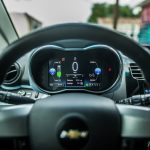Introduction
In the ever-evolving landscape of automotive technology, one term gaining prominence is “Edge Computing.” This transformative concept is reshaping how data is processed, especially in the realm of connected cars.
Processing Data at the Vehicle’s Edge
In its essence, edge computing involves processing data near the source of generation rather than relying on a centralized cloud. In the context of connected cars, this means the ability to make critical decisions right within the vehicle itself.
Real-time decision-making becomes paramount, and edge computing facilitates this by reducing latency and enhancing the overall efficiency of data processing. Picture this: a car making split-second decisions based on immediate data analysis, all happening within the confines of the vehicle.
Real-time Analytics in Connected Vehicles
Analytics plays a pivotal role in the connected car ecosystem. The ability to analyze data in real time opens up new possibilities for vehicle performance monitoring, predictive maintenance, and even personalized user experiences. Imagine a car that understands your preferences and adapts its functions accordingly.
However, with great power comes great responsibility. The article will delve into the benefits of real-time analytics, along with the challenges and innovative solutions in this dynamic landscape.
Edge Computing for Low-latency Applications
One of the primary advantages of edge computing in connected cars is its ability to address latency issues. In a world where every millisecond matters, especially in applications like autonomous driving, edge computing emerges as a game-changer.
We will explore the concept of latency, its significance in connected cars, and how edge-computing applications are instrumental in ensuring low-latency responses.
Improving Efficiency with Edge Computing in Cars
Efficiency is the name of the game in the automotive industry. Edge computing contributes to enhanced performance, improved energy efficiency, and significant cost reductions. This section will provide real-world examples of how edge computing is making cars smarter and more economical.
Challenges and Considerations
No technological advancement comes without challenges. Security concerns, integration issues, and scalability are critical aspects that need attention. The article will discuss these challenges and provide insights into how the industry is addressing them.
Future Trends in Edge Computing for Connected Cars
What does the future hold for edge computing in connected cars? This section will explore upcoming innovations, evolving technologies in the automotive sector, and the potential impact on user experiences. Readers will gain valuable insights into the direction this technology is heading.
Case Studies
Nothing validates the effectiveness of a technology better than real-world case studies. We will examine successful implementations of edge computing in connected cars, lessons learned from these experiences, and user feedback on the transformative impact.
Key Players in the Edge Computing for Connected Cars Market
Who are the trailblazers in the world of edge computing for connected cars? This section will highlight key companies leading the charge, collaborations, and partnerships shaping the industry, and the competitive landscape.
How to Implement Edge Computing in Your Connected Car?
For enthusiasts eager to embrace this technology, a step-by-step guide on how to implement edge computing in their connected cars will be provided. This includes considerations for DIY enthusiasts and the option for professional installation and maintenance.
Success Stories
The article will showcase success stories where edge computing has had a transformative impact on the automobile industry. User testimonials, recognition, and awards received by innovative solutions will be presented.
Expert Opinions
Insights from industry experts, their perspectives on future developments, and advice for enthusiasts and professionals will be shared. This section aims to provide a comprehensive view of the expert opinions shaping the future of edge computing in connected cars.
Frequently Asked Questions:
What is Edge Computing in Connected Cars?
Edge computing in connected cars involves processing data locally within the vehicle rather than relying on a centralized cloud.
How does Edge Computing Improve Efficiency?
Edge computing improves efficiency by reducing latency, enhancing performance, and contributing to energy efficiency.
Is Edge Computing Secure for Connected Vehicles?
Security is a priority in edge computing for connected cars, with measures in place to safeguard data and operations.
What Companies are Pioneering Edge Computing in Cars?
Key players include industry giants and innovative startups collaborating to drive advancements in edge computing for cars.
How Can I Implement Edge Computing in My Car?
Implementation involves following specific steps, with options for both DIY enthusiasts and professional installation and maintenance.
In conclusion, edge computing is reshaping the connected car landscape, ushering in a new era of efficiency, real-time analytics, and unparalleled user experiences. Embracing this technology is not just an option; it’s a necessity for those wanting to stay at the forefront of automotive innovation.
Last Updated on November 28, 2023 by admin

Mac is an Automotive enthusiast. He owns up to 15 vehicles. He deals with Auto problems and shows his skill to Car owners who are seeking any type of Car help.





